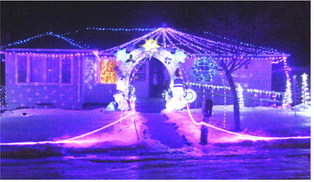Fort Peck Walleye Spawn Slow To Start
The winter and spring of 2023 is proving to be tenacious, with roughly 30 inches of ice remaining in some areas on Fort Peck Reservoir and nighttime temps in the single digits well into early April.
In most years, Fish, Wildlife and Parks fisheries crews start setting trap nets in early April. Traps are set to collect walleye that are beginning the spawning process. While photoperiod (day length) plays a role in walleye spawning activity, water temperature is the most important influencer in triggering the spawning process.
April 22, 2018, is the latest date on record that crews were able to set traps. Since 1937, there have been four years on Fort Peck when the ice didn’t go off until May. The latest recorded ice off was May 9, 1950.
The water in the Big Dry Arm warms up to optimal spawning temperatures more quickly compared to other portions of the reservoir such as the dam area. This is the main reason that FWP established the spawn operation in the Big Dry Arm. Walleye spawning typically peaks when water temperatures near 50 degrees.
There may be a very short window for the spawning collection to take place. In addition, there is a chance that crews will collect fewer eggs than they would on a “normal” year, because some fish may have already attempted to spawn or started to reabsorb (or hold) their eggs by the time operations are set up.
A reduction in total number of eggs collected would equate to fewer walleye produced in the hatchery and thus less available for stocking. The goal on a year like this is to collect enough eggs to ensure all the rearing ponds at the Fort Peck and Miles City hatcheries get stocked to maximize production of fingerling walleye. The number of walleye fry produced could be significantly lower.
Fort Peck is 31 feet below full pool. Access to boat ramps becomes really challenging under low water conditions. Currently, the Nelson Creek boat ramp is unusable, and crews may have to use the Rock Creek boat ramp which will require longer travel distances (10-12 miles) to reach favorable trap netting areas daily.
Even with lower reservoir levels in recent years, the Fort Peck walleye fishery is in relatively good shape (fisheries biologists use the word “balanced”). Standardized sampling in 2022 indicated a record high number of walleye per net, with both a strong number of large fish in the system, and two very large year classes of younger walleyes measuring 10-15 inches in length.
Studies show that strong year classes of walleye are not produced every year throughout much of their range. This may be nature’s mechanism to allow prey species and other predatory species to rebound and take advantage of the conditions.
One of the best aspects about the walleye spawn is the opportunity for public volunteers to help and work together with FWP staff.
Due to the probable narrow window for the spawning effort, FWP staff are asking volunteers to be patient and flexible. Staff will try to accommodate as many folks as possible, but prospective volunteers should know that space will be limited.
For more information on volunteering, contact Fort Peck Reservoir biologist Heath Headley at 406-526-3471, ext. 206. Volunteers will receive an information packet containing a self-addressed envelope and volunteer form, which must be completed and signed. Parents or guardians must sign the form for minors.
“Folks should list the dates they desire,” said Headley. “We will call to confirm dates, so it’s important for volunteers to provide us with phone numbers where they can be reached both day and night.” Weekends often fill quickly.
